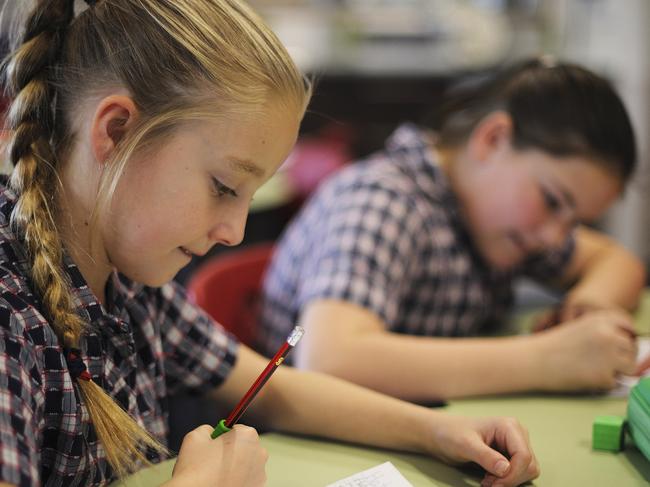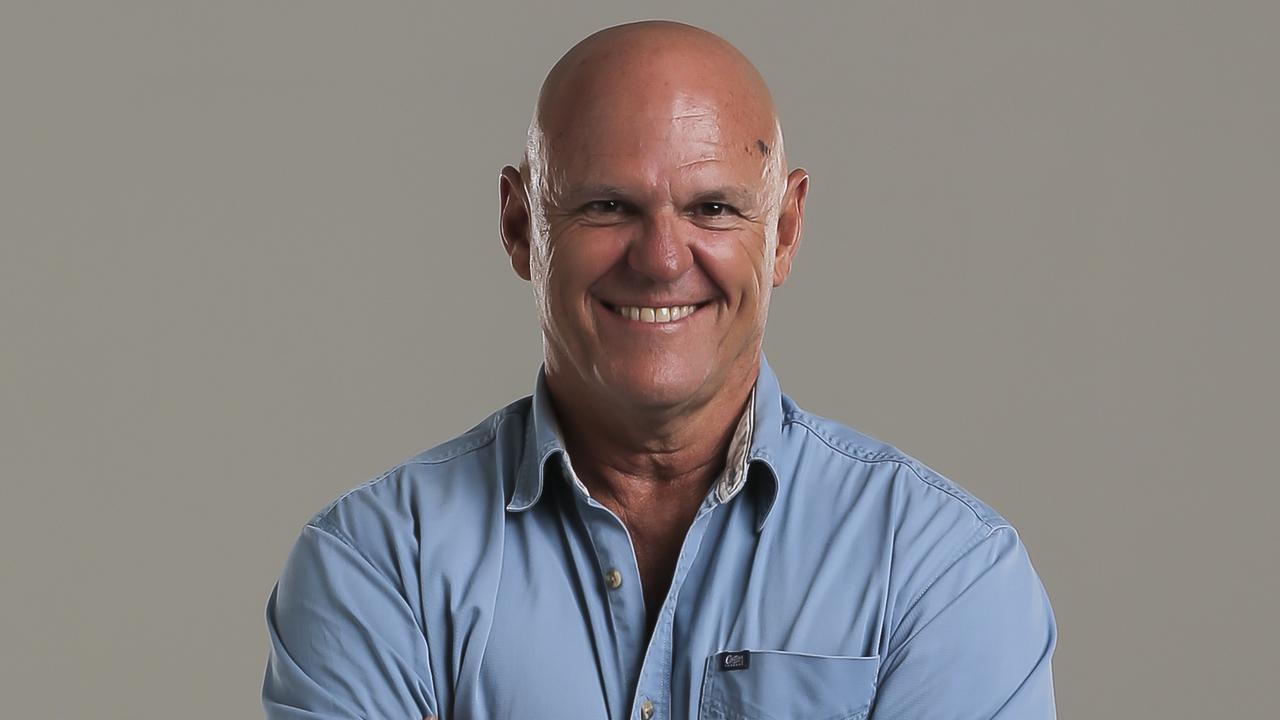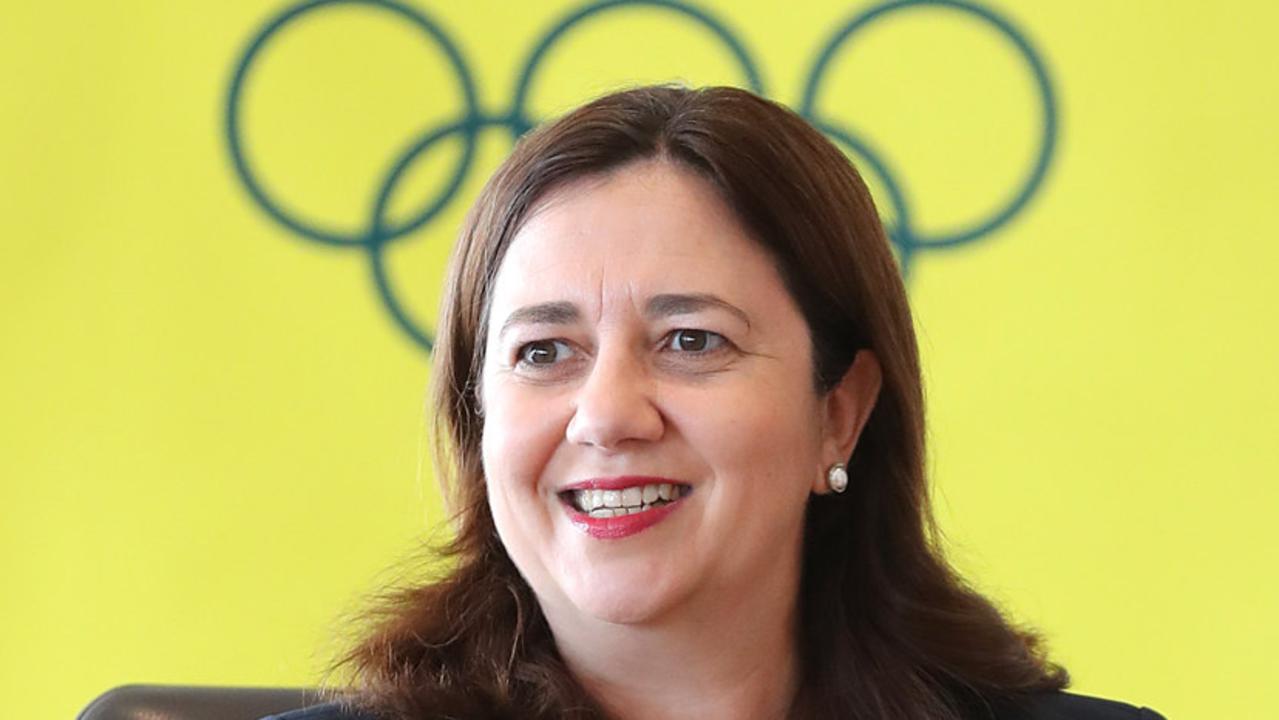Opinion: NAPLAN not the be-all and end-all of school outcomes
For many of us, our child’s education, and certainly our child’s school, is so much more than a quantitative measurement, writes Frances Whiting.
Opinion
Don't miss out on the headlines from Opinion. Followed categories will be added to My News.
MY DAUGHTER was one of the 244,000 Queensland school students who sat for the national NAPLAN testing in May, and before she did, we spent many hours with her under mock test conditions in order to improve her chances.
We also employed a private tutor in reading, writing and numeracy, rapped her on the knuckles if she slacked off during study periods, and promised her a pony if she stepped up above that all important national average line.
Did Queensland’s most expensive schools deliver parents ‘bang for their buck’?
Top 50 best Queensland NAPLAN schools revealed
NAPLAN 2019: How every Queensland school performed
Actually, we did none of those things. Instead, from what I recall on the morning of the test in May this year, I dropped her to school, gave her a kiss on the cheek, and told her to do her best. I say “just do your best” frequently to my children, and a lot of parents I know say it too.
Because for many of us, our child’s education, and certainly our child’s school, is so much more than a quantitative measurement.
Now, Queensland’s performance in this year’s NAPLAN testing, held by the Australian Curriculum Assessment and Reporting Authority (ACARA), caused much hand-wringing over the news that our Year 3, 5, 7 and 9 students posted lower scores in 12 out of the 20 categories than they did in 2018.
Alarm bells were also ringing at the admittedly eyebrow-raising figures that showed more than 22 per cent of our Year 9 students did not meet the minimum standard for writing, and more than 9 per cent
for reading.
On the gold-star side, however, Queensland scores improved from last year in Year 3 grammar and punctuation, Year 5 numeracy, and Year 7 reading and numeracy.
We’ve also steadily improved as a state in 17 out of 20 categories across the board since the first NAPLAN test in 2008.
All of which is to say, we’ve had mixed results this year, as we do every year, and NAPLAN itself has come under fire, as it does every year, for everything from the validity of its combined online and paper testing, to questions about its true reflection of the state of our state’s educational institutions.
We all know, for example, someone, or someone’s child, who has been discreetly or not so discreetly asked to stay away on NAPLAN day, the better to improve the whole school’s score.

But like it or not, this is the standardised testing we have, and so the real question is, what to do with its results?
If our child’s school does not perform particularly well, do we all panic and rush off to camp overnight to get them into Eagle Junction?
Or do we take a deep breath, look at our child’s individual results and if something is glaringly amiss, address it by getting them extra help, if we can afford it?
Or spending more time with them, if we have it? Or speaking to the school, and the teachers about how best to help them?
Plenty of high schools, for example, have free before and after-school tutoring available, often run voluntarily by teachers.
Other schools, my son’s included, offer peer-to-peer-based tuition on the same basis.
And when it comes to our school’s results, again if something is glaringly amiss from the rest of the state, it needs to be addressed, but if not I would measure a school’s success by something else that has nothing to do with dots on a bar chart.
With one in seven young people aged 4 to 17 now experiencing depression or anxiety, according to Beyond Blue, and one in 10 young people aged 12 to 17 self-harming, and study after study showing school leavers struggling to cope with life after finishing Year 10 or 12, I would be looking for something else behind the school gates.
Does the school offer all sorts of programs for all sorts of kids, both academically inclined and not?
Does it encourage independence and resilience by offering extracurricular activities that push them. Ask any student what being taken out into the bush and spending a night or two there alone did for them and the answer is plenty.
Does it teach gratitude by offering extracurricular activities that teach kids to look beyond themselves?
Ask any kid what spending time in a homeless shelter or a special school taught them and the answer will be plenty.
Does it walk the talk when it comes to “zero tolerance” for bullying? Are there real consequences for distressing behaviour?
Does it provide a safe haven for students, especially the kids who don’t have one at home?
If your child’s school does all of these things, then NAPLAN results aside, it’s ticking all the boxes.
And if it rewards your child for truly doing their best, then it’s probably the best place for them.
.


